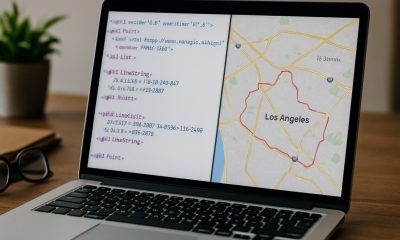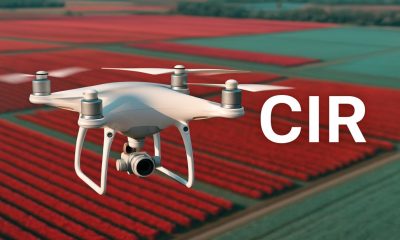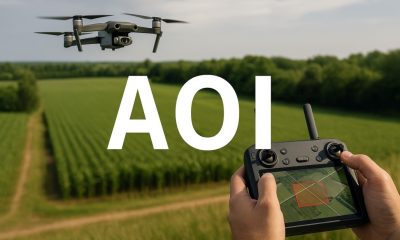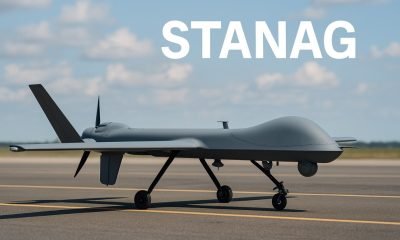- Acronym Guide
- AAM
- ABS
- AC
- ACAS
- ADS-B
- AFAC
- AGL
- AI
- AIM
- ALS
- AM
- AMA
- ANSP
- AOI
- APPI
- AUV
- AUVSI
- ARPAS-UK
- ASTM
- ATC
- BVLOS
- CAA
- CAAC
- CAB
- CASA
- CATT
- CBO
- CBR
- CBRN
- CDMA
- CDR
- CFR
- CIR
- COA
- COMINT
- CORS
- COTP
- COTR
- CPTED
- CV
- C2
- DAA
- DEM
- DFI
- DFS
- DGCA
- DHS
- DOD
- DPA
- DPEs
- DRG
- DRO
- DSM
- DSMX
- DSP
- DSSS
- DTM
- EASA
- EFT
- EO
- EOD
- EO/IR
- ELINT
- EMI
- ESC
- EVLOS
- eVTOLs
- FAA
- FCC
- FCS
- FHSS
- FICCI
- FLIR
- FOB
- FOV
- FPS
- FPV
- GBDAA
- GCP
- GCS
- GDPR
- GML
- GNSS
- GPS
- GSD
- GVC
- HDR
- HOGE
- IACRA
- ICAO
- ICS
- IMU
- INS
- IR
- ISA
- ISR
- ITU
- JARUS
- LAAMS
- LAANC
- LAATM
- LAI
- LBA
- LIDAR
- LOS
- LSALT
- MAC
- MAVLink
- MLIT
- MMS
- MSL
- MTOM
- NDAA
- NCSL
- NFZ
- NIST
- NMEA
- NOTAM
- NPA
- NPRM
- NTIA
- OBIA
- OEM
- OFDM
- OOP
- PASM
- PAV
- PCV
- PdM
- PEC
- PIC
- PID
- PIPL
- PLD
- PM
- PN
- PPK
- PPS
- PSM
- PWM
- UAM
- UAOP
- UAS
- UASTM
- UAV
- UCAVs
- UHD
- UHF
- USV
- UTM
- RAIM
- RCC
- RCS
- RFI
- ReOC
- RePL
- RMS
- ROI
- RPAS
- RPC
- RTH
- RTK
- SaR
- SAR
- SARP
- SBAS
- S.Bus
- SBIR
- SEDENA
- SfM
- SFOC
- SIGINT
- SLAM
- SMS
- SORA
- STANAG
- STTR
- sUAS
- TCAS
- TCCA
- TFR
- TIN
- TOF
- TP
- TPS
- TSA
- VHF
- VLOS
- VTOL
Drone Acronyms
What is ML (Machine Learning) & How Does it Work?
By
Jacob StonerTable Of Contents

Definition
ML, or Machine Learning, is a subset of artificial intelligence (AI) focused on the development of algorithms that allow computers to learn from and make predictions or decisions based on data. Instead of being explicitly programmed for every task, ML models are trained on large datasets, enabling them to recognize patterns, improve over time, and make accurate judgments. In drone operations, ML is often used for automated damage detection, object recognition, predictive maintenance, and real-time decision support.
Usage
Machine Learning powers automated damage detection in drone inspections, allowing drones to analyze images and sensor data to identify cracks, corrosion, structural weaknesses, or anomalies without human intervention. ML models are trained with thousands of examples of specific damages, enabling them to detect issues quickly and with high accuracy across industries like construction, energy, transportation, and agriculture.
Relevance to the Industry
ML dramatically improves inspection efficiency, consistency, and scalability. By automatically detecting damage and anomalies, drones equipped with ML capabilities reduce the need for manual review, speed up decision-making, and minimize human error. ML is central to scaling drone services for large infrastructure projects, insurance assessments, and emergency response operations, where rapid, reliable data analysis is critical.
How Does ML (Machine Learning) Work?
Machine Learning (ML) in drones works by training algorithms to recognize patterns, anomalies, or specific features in captured data, allowing for automated interpretation without direct human analysis. Here’s how ML enables automated damage detection and other inspection tasks in drone operations:
Data Collection and Labeling
Large datasets of images, thermal readings, or 3D scans are collected—often showing examples of both normal and damaged conditions. Experts label these datasets by identifying and marking specific features like cracks, corrosion, or deformations. This labeled data becomes the foundation for training ML models.
Model Training
ML algorithms, typically deep learning models such as Convolutional Neural Networks (CNNs), are trained on the labeled datasets. The model learns to differentiate between normal and abnormal patterns by adjusting its internal parameters each time it makes a prediction and receives feedback during the training process.
Deployment on Drones or Post-Processing Systems
Once trained, the ML model is either embedded onboard the drone (for real-time analysis during flight) or used during post-flight data processing. When a drone captures new images or sensor readings, the model applies what it has learned to detect signs of damage or anomalies automatically.
Automated Detection and Flagging
During or after the flight, the ML model scans the data, highlights potential problem areas, assigns confidence levels to its detections, and often categorizes issues by type (e.g., crack, corrosion, thermal hotspot).
Reporting and Human Validation
The flagged results are compiled into inspection reports for review. In critical operations, human inspectors validate the AI findings, combining ML’s speed and pattern recognition capabilities with expert judgment to ensure accuracy and prioritize maintenance actions.
Continuous Learning and Improvement
Over time, ML models can be retrained with new data, including corrected detections or examples of emerging damage types. This continuous learning process makes the system more accurate and adaptable to new environments and evolving inspection needs.
By leveraging ML, drones transform from simple data collectors into intelligent inspection platforms capable of drastically reducing analysis time, detecting hidden defects, and supporting proactive maintenance strategies.
Example in Use
“After completing the bridge inspection flight, the drone’s onboard machine learning system flagged several hairline cracks that were not immediately visible to the human eye.”
Frequently Asked Questions about ML (Machine Learning)
How does Machine Learning help drones detect damage?
Answer:
Drones capture visual or thermal images during inspection flights.
ML algorithms analyze the images, comparing them to patterns learned from thousands of prior examples.
The system automatically flags suspected damages like cracks, rust, leaks, or heat anomalies for further review.
What types of drone inspections use Machine Learning?
Answer:
Infrastructure inspections (e.g., bridges, towers, pipelines).
Energy sector inspections (e.g., solar farms, wind turbines, oil rigs).
Agriculture monitoring (e.g., crop stress detection).
Disaster response (e.g., rapid structural damage assessment).
Is Machine Learning more accurate than manual inspection?
Answer:
ML systems can detect subtle patterns and issues that might be missed by human inspectors, especially when dealing with large datasets.
However, ML is often used alongside human review for final confirmation, creating a hybrid system that combines speed with expert judgment.
For examples of these acronyms visit our Industries page.
As the CEO of Flyeye.io, Jacob Stoner spearheads the company's operations with his extensive expertise in the drone industry. He is a licensed commercial drone operator in Canada, where he frequently conducts drone inspections. Jacob is a highly respected figure within his local drone community, where he indulges his passion for videography during his leisure time. Above all, Jacob's keen interest lies in the potential societal impact of drone technology advancements.











